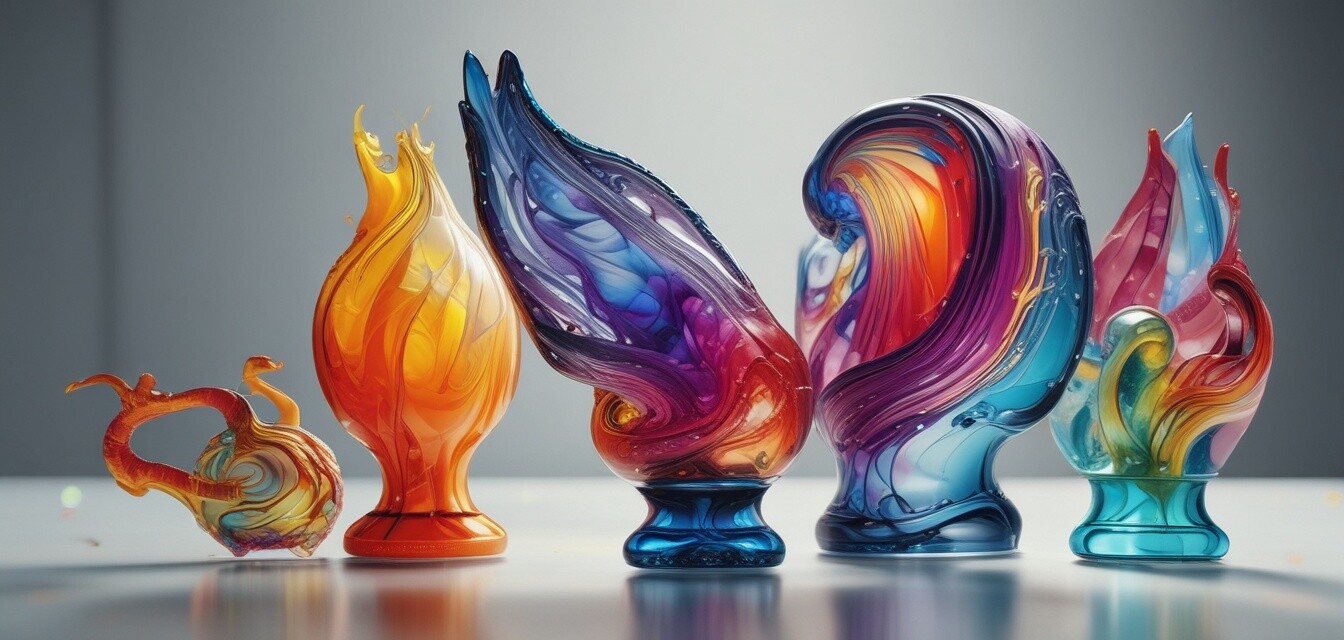
The art of casting: Techniques for making glass sculptures
Key Takeaways
- Casting glass sculptures involves the use of specific molds to shape molten glass.
- There are various techniques, including sand casting, investment casting, and lost wax casting.
- Choosing the right materials is crucial for achieving detailed and stunning results.
- Safety precautions must always be taken when working with hot glass and kilns.
- Experimenting with different methods can lead to unique artistic expressions.
Glass sculpting is an ancient art form that has evolved over centuries. Today, artists employ various casting techniques to create stunning glass sculptures. In this article, we will explore several methods, materials, and essential tips for casting glass effectively.
Understanding glass casting
Glass casting is a process where molten glass is poured into molds to create shapes and sculptures. This technique allows for both intricate details and large-scale pieces. Let's look into the popular casting methods.
Types of glass casting techniques
| Technique | Description | Best For |
|---|---|---|
| Sand casting | A process where molten glass is poured into sand molds. | Large sculptures and simple shapes. |
| Investment casting | This method uses a disposable mold made from a ceramic material. | Intricate designs and finer details. |
| Lost wax casting | A technique where wax models are used, which are melted away to form the mold. | Highly detailed and complex forms. |
Materials required
When creating glass sculptures, selecting the right materials is essential. Here are some key materials you will need:
- Glass frit: Small pieces of crushed glass used for mixing colors.
- Glass sheets: Flat glass pieces that can be used as a base for some projects.
- Kiln: Essential for melting and firing glass.
- Molds: Different types for various techniques, such as sand and investment molds.
Detailed glass casting process
Step-by-step guide
- Select a design: Choose an idea that excites you and sketch it out.
- Prepare the mold: Depending on your chosen technique, prepare the appropriate mold.
- Heat the glass: In the kiln, heat the glass to its melting point, usually between 1,400°F and 2,000°F.
- Pour the glass: Carefully pour the molten glass into the prepared mold.
- Cooling process: Allow the glass to cool gradually to prevent cracking.
- Finishing touches: Finish the sculpture by grinding, polishing, or adding additional layers.
Safety precautions
Working with hot glass presents risks, so always take safety seriously:
- Wear protective gear: heat-resistant gloves, safety goggles, and a face shield.
- Ensure proper ventilation when working with kilns to avoid inhaling fumes.
- Keep a fire extinguisher nearby, as molten glass can pose a fire risk.
- Always read and follow kiln operating instructions carefully.
Tips for successful glass casting
Beginner tips
- Start with simple shapes and gradually progress to complex designs.
- Experiment with colors and textures to enhance your artistic expression.
- Document your process to learn from each piece you create and celebrate your progress.
- Join local glass art groups to learn from experienced artists and share your work.
Learn more about glass molds
Exploring different types of molds can greatly influence the outcome of your sculptures. For more information on specific glass molds, check out our guide on glass molds.
Conclusion
Casting glass sculptures is an engaging and rewarding hobby that allows you to express your creativity. By understanding the various techniques and safety precautions involved, you can create stunning pieces that reflect your artistry. Happy crafting!
Pros
- Allows for unique artistic expression.
- Wide variety of techniques to explore.
- Creates both functional and decorative items.
Cons
- Requires specialized tools and equipment.
- Can be time-consuming for detailed projects.
- Presents safety risks if proper precautions are not followed.

